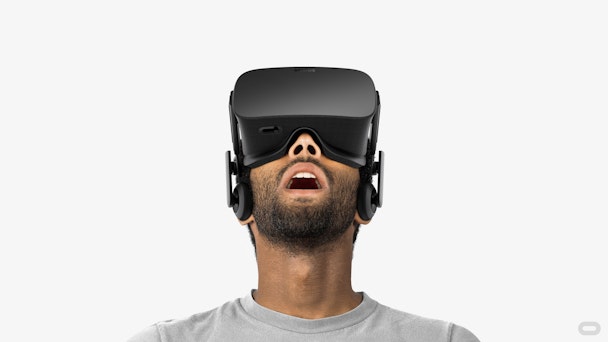Does Oculus Rift give Facebook – and its advertisers – a window into our emotions?
Oculus Rift started shipping last week, and early users state that it comes with some interesting terms and conditions that you have to agree to before using it.

According to reports, when you install Oculus Rift software on your PC, you have to accept that the Facebook-owned company will be able to collect and use data about you, and this can be gathered about games, content, apps or other experiences.
It shouldn’t be a surprise that Facebook is asking to collect this information – it’s a $200bn company that depends on advertising for almost all of its revenues and profits – but it gives some clue as to how it might start to allow marketing and promotions across devices, including the Rift. Facebook hasn’t been hit much by ad blocking so far as it has such a strong control over its own ecosystem, and Oculus Rift will give it another content area where users can’t block ads.
Virtual reality headsets provide very immersive experiences – you can actually feel like you’re on a rollercoaster, exploring outer space, fighting zombies and so on – and it’s going to command 100 per cent of users’ attention when they’re wearing it.
What’s more, these games and experiences are going to elicit lots of emotions. There are already videos on YouTube and elsewhere of people ‘freaking out’ when they are playing games like A Chair in A Room (dubbed ‘a first person horror in virtual reality') – and so it’s very possible that Facebook is going to target ads at people based on how they are reacting to what they’re seeing and feeling.
There are already mobile apps like the Washington Post’s app, which can gauge people’s moods based on how they are using the app – for example if someone isn’t scrolling through a news story it will offer them one more likely to engage them, based purely on touch. Oculus Rift has more potential to do things like this, including movements, noises and so on, both on its own and also relative to others who have played the same games.
Just as it’s possible to measure reactions to moments in games and alter the narrative, it should be possible at some stage to measure reactions to ads, and maybe to alter elements in real-time based on this.
In the early days we’d expect Facebook to concentrate on collecting data about usage. Facebook is pretty cautious about how it introduces ads, and lots of things start as limited tests to a small numbers of users. The ads we see on Facebook today have been introduced gradually, but in the meantime there is lots of scope for using the data from Oculus to inform targeting in other parts of Facebook’s ad ecosystem; for example, targeting owners on Instagram with other products that might also appeal to early adopters.
All the time it will be collecting data, and once the advertising within Oculus Rift does arrive, it will be very tailored to the device and user, and also use insights that no other VR manufacturer could have access to. It’s very possible that it will then start to be able to measure the emotional impact of ads on users, a holy grail to many advertisers.
How brands can use this will depend on how much access to the data Facebook allows brands and their agencies. But assuming that Facebook does give access, brands will need to set up tests to see how different sorts of creative treatments and effects make people feel – does it increase their favourability, or likelihood to buy?
As with all data collection and usage though, Facebook will need to be very careful that it does not either compromise the experience of using the Oculus Rift in the way it collects data, or allow the data to be misused and betray consumers’ trust.
Dan Calladine is head of media futures at Carat Global
